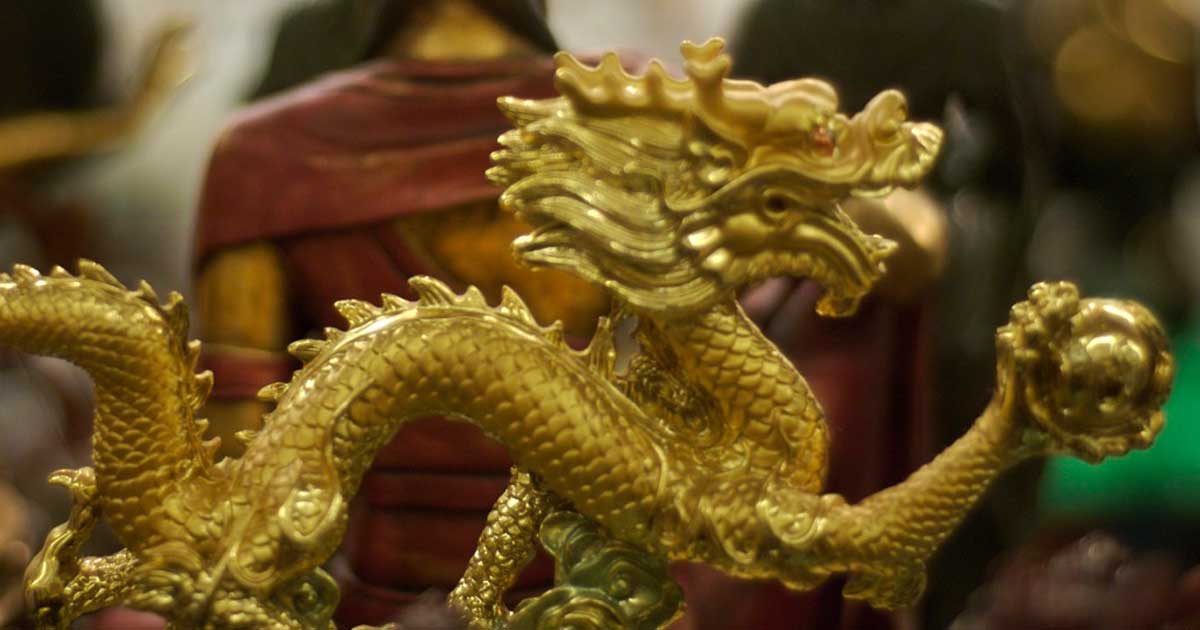Venus: Goddess Born from the Ocean Like a Pearl
- By Laryssa Wirstiuk
- Mar 29, 2021

The Roman goddess of love and beauty, Venus was born in the sea, emerging from an oyster. She symbolizes concepts like femininity, prosperity, fertility, and victory. The Romans deemed her such an important figure in their culture and history that they even claimed her as their ancestress or the “Mother of Rome”.
If you know a thing or two about pearls, or you’ve read our blog posts in the past, then you’re aware of the fact that pearls also come from oysters. For example, Akoya pearls, which we offer as an option for our Add-A-Pearl necklaces, are grown in the Pinctada fucata (martensii) oyster, a species that doesn't produce large pearls and can't often produce pearls naturally.
As lovers of pearls, we feel a natural inclination toward Venus, since the two share oceanic origins. In addition, they’re both classic beauties that endure the test of time. In this blog post, we’re going to share interesting information about Venus, so you can fully appreciate this powerful goddess. Even though she never actually existed, she has left an impactful and lasting legacy worldwide.
Venus in Art
Of all the ancient deities, Venus was one of the most celebrated. The Birth of Venus by Sandro Botticelli is a well-known tempera painting from the late 1400s depicting the goddess Venus on canvas. Currently housed by the Uffizi Gallery in Florence, Italy, this iconic depiction of the Goddess of Love and Beauty is one of the most famous works of art in the world. It also communicates the goddess’ origin story in a visual way.
In the center of the painting, Venus stands on a large oyster shell, using her long hair as a shield for modesty. To her left, the winged wind god Zephyr and his lover breathe life into Venus. To her right, the Hora of Spring - a minor Greek goddess of the seasons - holds an ornate cloak that will cover Venus as she drifts toward the shore. According to one article about her origin story, “As she was born laughing, an emanation of pleasure beamed from her countenance, and her charms were so attractive, in the assembly of the gods, that most of them desired to obtain her in marriage.” (Source) She was quite a captivating lady!
The style of Botticelli’s painting has been described by some scholars as “visual poetry”, due to its dreamlike nature and the way it combines many meaningful elements in one composition. Did you know that this painting actually measures six feet by nine feet? It’s the “first large-scale canvas created in Renaissance Florence” (Source). It’s actually so large that it had to be painted on two pieces of canvas sewn together. For the time, the painting was definitely unusual. Art historian John B. Nici says, it’s the “first monumental female nude of a pagan goddess since the ancient world, and for that reason alone it must have raised eyebrows” (Source). It’s truly a memorable painting and one worth beholding for yourself if you have the chance to travel to Florence.
Throughout the centuries, many artists have been captivated by Venus’s story and even inspired by Botticelli’s The Birth of Venus, creating their own interpretations of the myth and the painting.
A bronze sculpture of Venus’ head from about 100 CE - part of The J. Paul Getty Museum collection in Malibu, CA - depicts the goddess wearing a pearl pendant earring in one of her ears. “Lustrous fruits of the ocean and love and perfected by nature, pearls were a fitting reminder of the goddess of beauty, love, and fertility. Through dedicating gifts of the gem to Venus, the Romans were recalling her origins” (Source).
In 1963, artist Alain Jacquet - widely acknowledged as a French representative of the American Pop Art movement - depicted Venus as a gas pump in his painting Camouflage Botticelli. In 1984, Andy Warhol transformed Venus into a Hollywood starlet by using his signature print-making techniques in a variety of pop color combinations. In 2017, the Chicago-based, Afro-Cuban American artist Harmonia Rosales replaced Venus with a black woman, amplifying black beauty and femininity.
Venus Throughout History
Julius Caesar, the legendary Roman general and statesman, claimed that he was a direct descendant of the goddess Venus. As powerful and wealthy as he was, he had a taste for luxury and - of course - for pearls. Some historians believe that was motivated to invade Britain by his desire to find pearls there. When he returned victorious to Rome in 46 BCE, he decided to dedicate a pearl-encrusted cuirass, which is a special piece of armor, to Venus as a gift of thanks for protecting him.
In another blog post “Common Myths and Meanings Associated with Pearls”, we wrote about Cleopatra, a powerful female figure in history and the last active ruler of the Ptolemaic Kingdom of Egypt. One legend about Cleopatra says that she removed one of her pearl earrings, dropped it into a cup of vinegar, and then drank the dissolved pearl to show her power to Marc Antony. According to legend, after Cleopatra won her bet, the other pearl was cut in half to hang from the ears of the statue of Venus in the Pantheon (Source).
Venus Today
Venus has also found her way into contemporary popular culture and marketing campaigns. For example, the cover of Lady Gaga’s 2013 album Artpop, designed by artist Jeff Koons, features the pop star pictured in the center with just a hint of Boticcelli’s The Birth of Venus behind her. She even has a song on the album titled “Venus”; in the lyrics, Lady Gaga keeps repeating, “I wonder if this could be love.”
Venus has even been a “cover girl”, appearing twice on the cover of The New Yorker magazine. For the May 1992 cover, illustrator Susan Davis depicted Venus as a modern woman, holding a blowdryer in place of the winged wind god Zephyr. For the August, 2014 cover, Venus is shown on a beach surrounded by sunbathers taking photos of her with their cellphones.
Fashion designers have also been inspired by Venus. As part of her fall 1938 Pagan collection, Italian designer Elsa Schiaparelli designed an evening dress that looks like the gown being worn by the goddess of spring in Botticelli’s painting. According to The Met, Schiaparelli’s dress is “executed on a heliotrope crepe ground, with a lush wreath around the neck. The intricate wreath, incorporating plastic, sequins and artificial flowers, features delicate textured leaves and vibrant blossoms...The belt that accompanies the gown, a painted blue and white plastic strip with a logo S-clasp, is a stand-alone art piece functioning as a fashionable accessory” (Source).
In 1993, at the Dolce & Gabbana S/S Fashion Show in Milan, Italy, the legendary design house revealed a form-fitting, sleeveless dress with a collage-like pattern featuring scenes from The Birth of Venus. Unsurprisingly, model Karen Mulder is draped with layers of pearl strands to complement the look (Source).
You may remember Beyoncé’s 2017 pregnancy and maternity portraits, which feature the pop star wearing a flouncy, floral, floor-length robe and teal-blue veil as she stands before a lush floral arch and ocean backdrop. In an article for Pitchfork magazine, one art historian said, “But what we know now, and perhaps knew on some level before, is that Beyoncé is a Venus of our times.”
At this time of year, you can actually celebrate the goddess Venus. Called “Veneralia”, Venus’ festival takes place on April 1st. For this holiday, worshippers would drape statues of Venus with wreaths of myrtle and other flowers, sometimes washing the statues as well. Another festival that takes place in April is Vinalia Urbana, which is the first of two annual Roman wine festivals aimed at protecting vineyards. An article from Study.com says, “This festival originally honored Jupiter. However, as Venus became more and more important in Roman society, she stole part of the spotlight” (Source). It’s difficult to ignore this beautiful and powerful goddess!
Goddesses like Venus may be mythical beings, but we can still celebrate the real-life “goddesses” in our lives on a daily basis: our daughters, nieces, granddaughters, sisters, and other inspiring female figures. Starting a new tradition with an Add-A-Pearl cultured pearl necklace is an excellent way to honor these loved ones. Pearls have an otherworldly quality that makes them feel mythical and special, like they were born from the sea to offer us beauty and pleasure.













